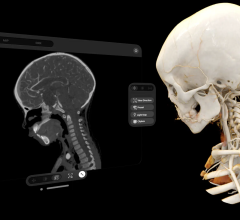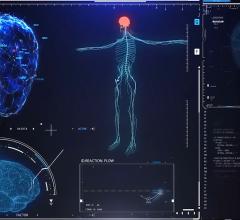
Anesthesia information management systems can help document all the drugs, dosages and the times administered. AIMS also alert the anesthesiologist to any potential errors or interactions.
An Achilles' heal in the armor of hospital patient safety protocol is the fact that anesthesiologists are the only doctors who diagnose, prescribe, fill the prescription and administer drugs with no checks or balances to prevent mistakes. This is the No. 1 reason why anesthesiology information management systems (AIMS) have become popular and new technical innovations are constantly added to the systems in an effort to make hospitals safer and prevent malpractice litigation.
It is estimated 1.5 million Americans are sickened, injured or killed each year by medication errors, according to a 2006 study conducted by the National Institute of Medicine. The report also estimates the cost of treating drug-related injuries just in hospitals to total at least $3.5 billion a year.
“Anesthesiologists have no way to check themselves and they are human and they make errors,” said Lebron Cooper, M.D., vice chairman of clinical operations, department of anesthesiology, clinical director of the OR, Ochsner Health System in New Orleans. “There is a fault in medicine in that we are all human and we all make mistakes. Unfortunately, in anesthesiology one mistake can kill someone.”
To prevent medication errors, Dr. Cooper supports adopting bar-code technology and the automation incorporated into AIMS. He said ideally, AIMS can act as a control center to monitor the patient and double check actions and drugs being administered by the anesthesiologist. AIMS incorporating an automated drug dispensing cabinet can act as an assistant pharmacist in the OR, he says. Most systems have a touchscreen to choose drugs and dosages, and when pressed, the system will unlock the proper drawer that contains the drug. To ensure a look-alike drug was not grabbed by accident, bar codes on the drug packaging can be scanned with a bar-code reader to double check it is correct.
This technology is the reason Ochsner Health System is adopting the DocuSys AIMS, which uses integrated bar-code scanning technology, Dr. Cooper said.
Patient information, including weight and allergies, can be entered into AIMS and dose calculators and alarm parameters can sound alerts if a potential drug interaction is detected, which must be acknowledged by the anesthesiologist before proceeding. These systems automatically record data such as vital signs, the drug’s dosage and times administered and lab results. The system can also aid in inventory control and management and patient billing.
Dr. Cooper said good AIMS systems made by companies like Omnicell, McKesson, Picis, DocuSys, GE, Cardinal Healthcare and Safersleep all pretty much do the same thing, but none fully integrate every device or all the drugs involved. He said issues especially arise with drugs, which sometimes go through three to five parties before being used in an OR.
Automating technology in anesthesia is still a long way off from solving all the problems of errors, Dr. Cooper says. Regardless of how many technological bells and whistles are installed in a system, he says the biggest flaw in anesthesiology management is human error. He says errors can start at the lowest level of those who handle the drugs, such as pharmacy technicians who misplace drugs in dispensing system cart bins. Tiny bar codes on small vials are sometimes hard for the scanners to read, and bar-code labels sometimes come off bottles, or worse, get stuck to other drug containers. However, he says AIMS do offer a big push to enhance patient safety.
The Basic AIMS Cart System
The Pyxis anesthesia cart system offered by Cardinal Healthcare is typical of carts integrated with an AIMS. It offers a touchscreen system to enter drug data into the patient’s electronic health record in real time. The touchscreen is also used to report what drugs are being administered. When the screen is touched, the computer unlocks a cart drawer that contains the appropriate drug. In addition to several large drawers with individual bins inside, the cart has single drug drawers for more dangerous drugs. The touchscreen can be customized to show the layout of each drawer with multiple drugs.
The computer system will alert the anesthesiologist if they attempt to use a drug that may interact with others already administered, or if the patient has an allergy to the drug. Other alerts notify the anesthesiologist if they forgot to administer prophylactic antibiotics at the start of a procedure, if a drug dose is higher than recommended for the patient's body weight, or if the drug's use is appropriate or safe based on the patient's vital signs.
The Pyxis system has a biometric thumb print scanner to verify the equipment user. The computer also comes with an optional bar-code reader to record the drugs and doses being used and automatically register it for patient billing. The system also subtracts the items from inventory, which helps with pharmacy returns, or when transferring items to the next patient.
Heading Off Litigation
In 1998 the Mayo Clinic began adopting the Picis Chart Plus AIMS system, said John Abenstein, M.D. M.S.E.E., associate professor of anesthesiology, Mayo Clinic College of Medicine in Rochester, MN. He says the system greatly improved patient records by making the information immediately available and legible, as previous hand-written notes were often illegible.
AIMS also help fill in the gaps that occur during emergencies in the OR when clinicians are busy attending to the patient instead of taking notes.
Hooked into the system are bar-code readers, which must scan the patient's ID wrist bracelet to begin and end a session on the system. The readers are also used to scan blood products to ensure they are matched to the patient. Dr. Abenstein says the clinic is also launching a program to bar code all its bedside medication.
Dr. Abenstein says AIMS helped increase the detail of the documentation in the OR. He says anesthesiologists have always been meticulous record keepers, but AIMS helps make it easier and more thorough by automatically recording data such as blood gas test results, patient vitals, and what drugs and dosages are given using a touchscreen or bar-code reader.
“There is no question in my mind it improves the quality of patient care,” Dr. Abenstein said.
This level of documentation has also proved very helpful defending clinicians in malpractice litigation.
“We have repeatedly seen when challenged legally, the completeness of the record has assisted us in defending our clinicians and our clinic in litigation,” Dr. Abenstein said. “The automated records have helped us, not hurt us.”


 May 01, 2024
May 01, 2024 








